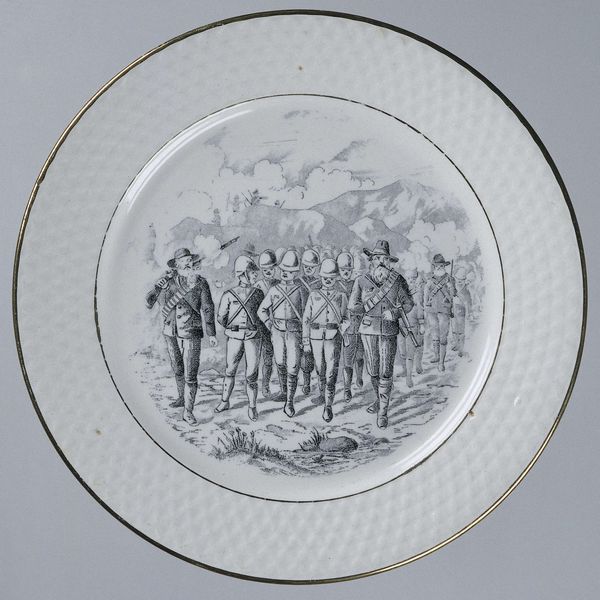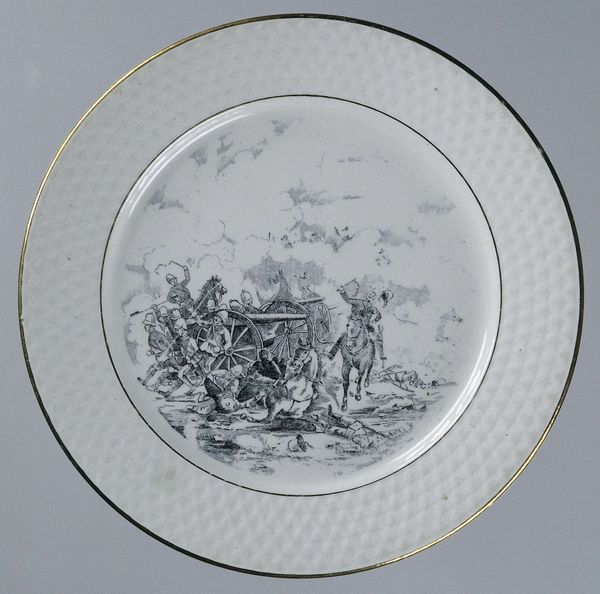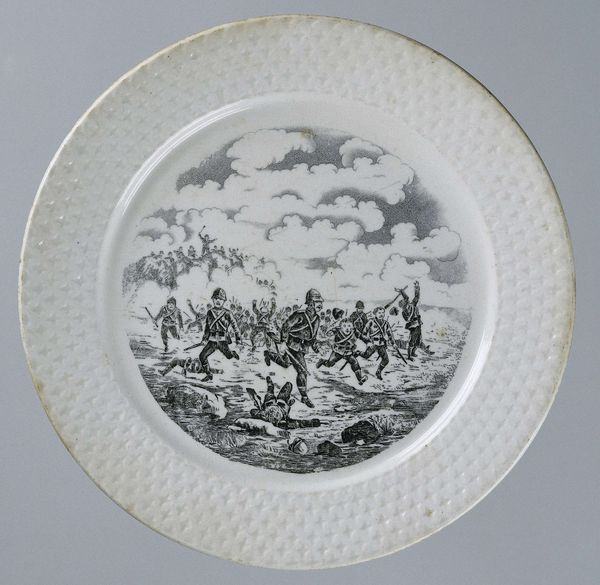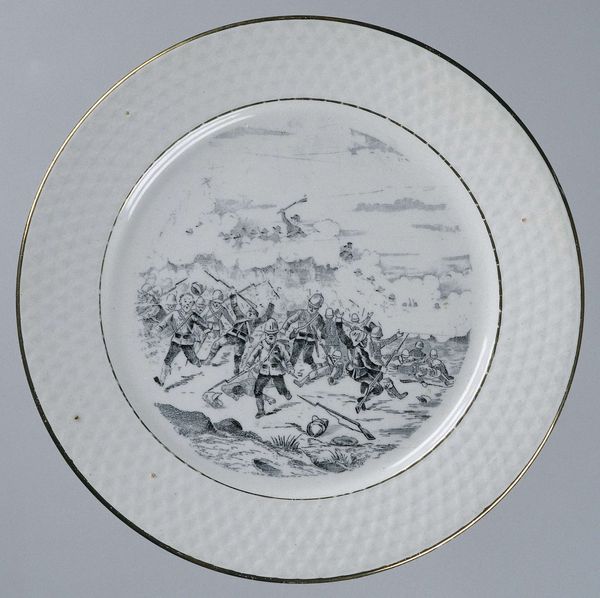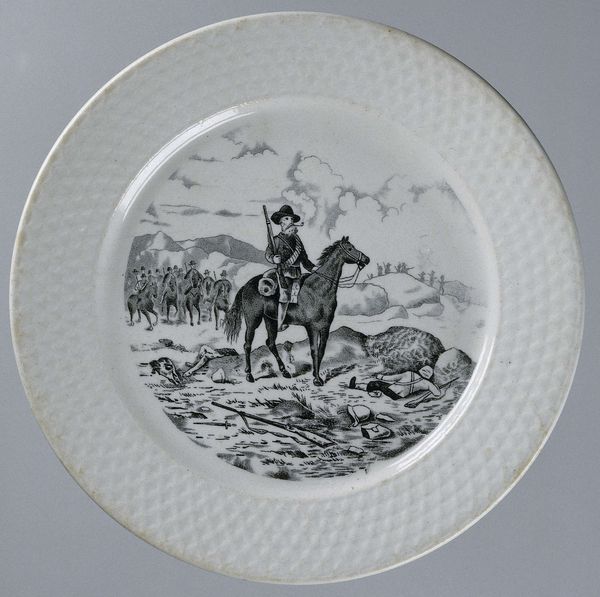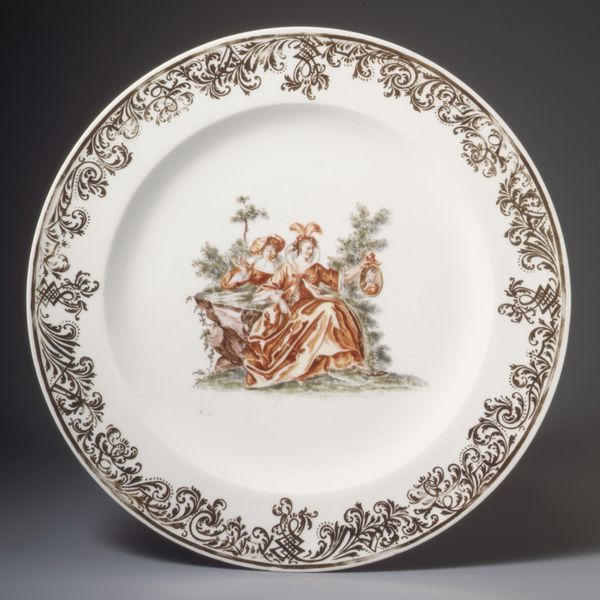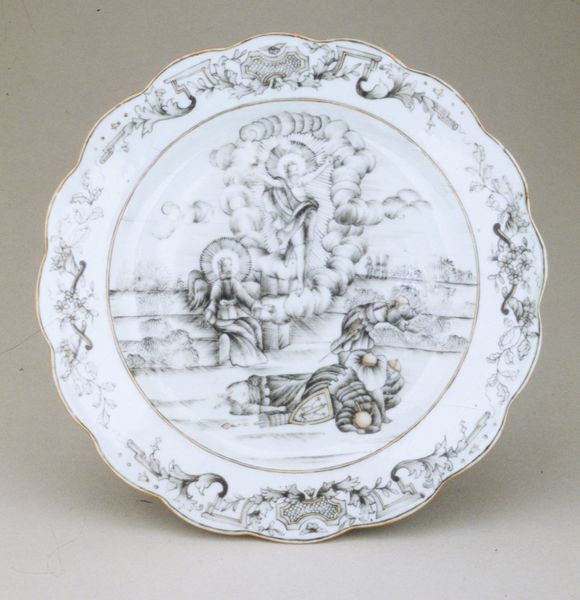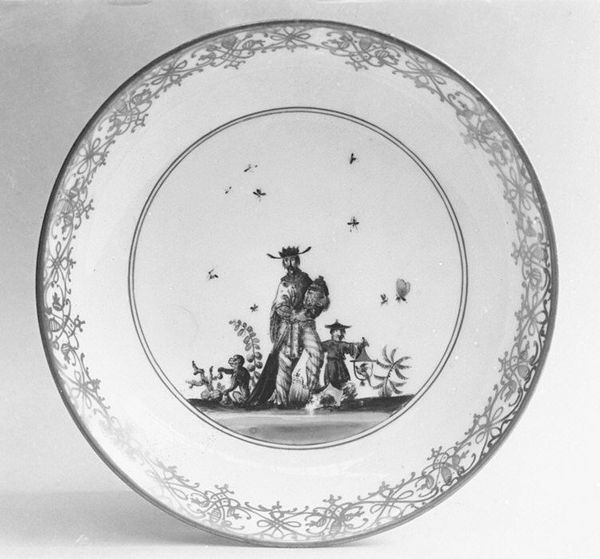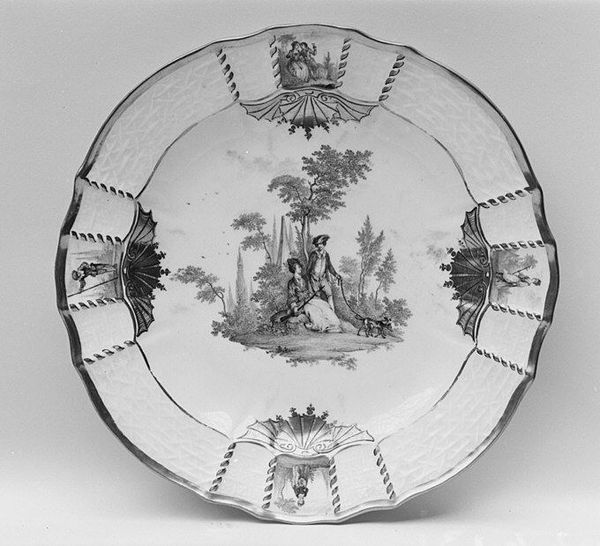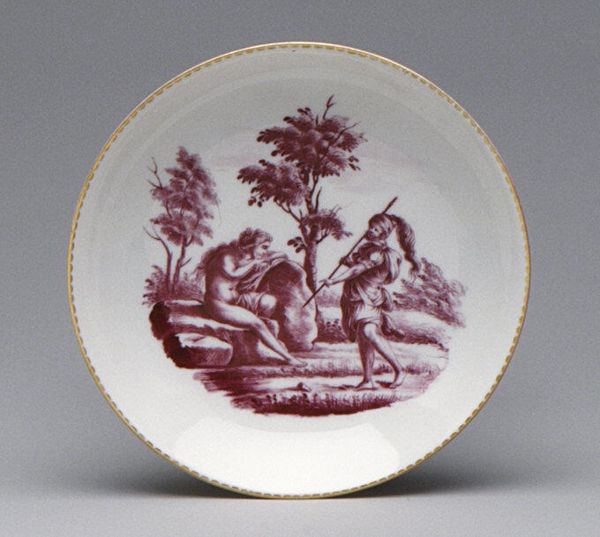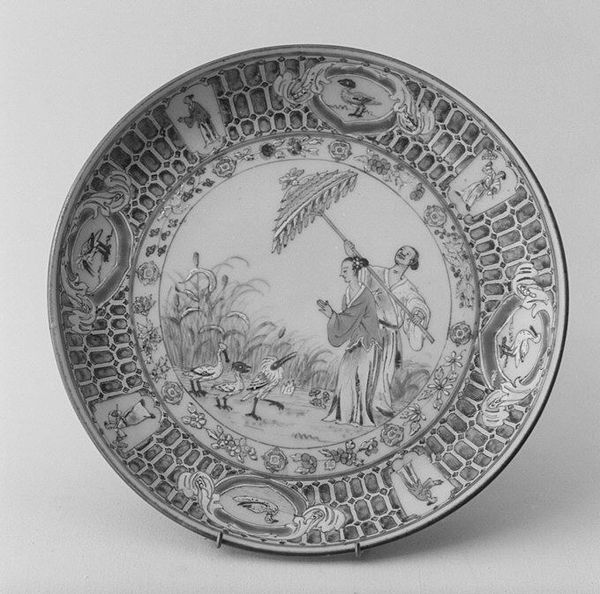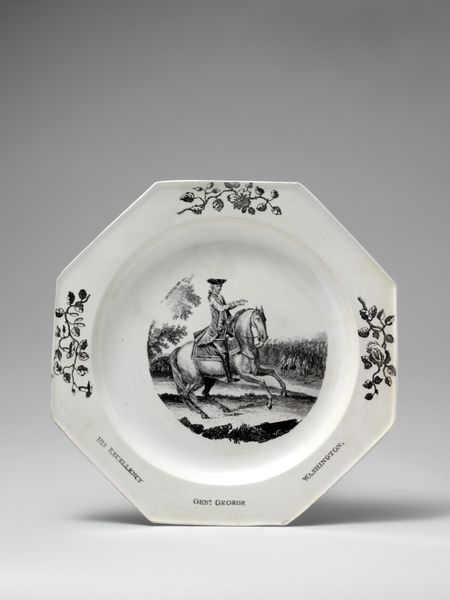
print, ceramic, earthenware
#
portrait
#
narrative-art
# print
#
ceramic
#
earthenware
#
stoneware
#
ceramic
#
genre-painting
Dimensions: height 2 cm, diameter 19.6 cm
Copyright: Rijks Museum: Open Domain
Editor: Here we have "Herinneringsbord Boerenoorlog: twee mannen," or "Boer War Commemorative Plate: two men" created sometime between 1899 and 1925. It’s earthenware, and it depicts two men with rifles. There’s something stoic about the image, maybe even weary. How do you interpret this work, considering its historical context? Curator: It’s important to remember the context of the Boer Wars. This plate, made after the wars but still within living memory of them, reveals much about the cultural memory and even the *commodification* of that memory. Think about where this image ends up – on a decorative plate. What does that suggest about the popular understanding, and even celebration, of these conflicts? Editor: So, it's less about historical accuracy and more about shaping public perception? Curator: Precisely. We have two figures depicted here, presumably representing Boers. The composition – their stance, the landscape, even the decision to portray them on a domestic object like a plate - all contribute to a certain narrative. This wasn't necessarily about conveying the reality of war. Instead, consider how the plate itself transforms historical trauma into something consumable and, perhaps, palatable for the Dutch public. Editor: It's almost like the image has been softened for easy consumption. What do you mean by "palatable?" Curator: Well, think about who was buying and displaying this plate. These images aren't neutral; they serve a purpose, usually reinforcing specific cultural or political views of those in power. This also raises some difficult questions about the ethics of commemorating war on everyday objects, particularly when that commemoration may gloss over the complexities and brutalities of the actual conflict. Editor: I hadn't considered it that way. Now I'm seeing a layered representation of the conflict – a carefully constructed, perhaps sanitized, version of history meant for public consumption. Curator: Exactly. By examining this object through the lens of its cultural and political milieu, we understand its true value lies in what it *reveals* about that specific historical context, and the public's relationship to it, not necessarily in the details of the war itself. Editor: That's really given me a different way to approach historical art. Thank you. Curator: My pleasure. Analyzing the social function of art truly deepens our appreciation.
Comments
No comments
Be the first to comment and join the conversation on the ultimate creative platform.
